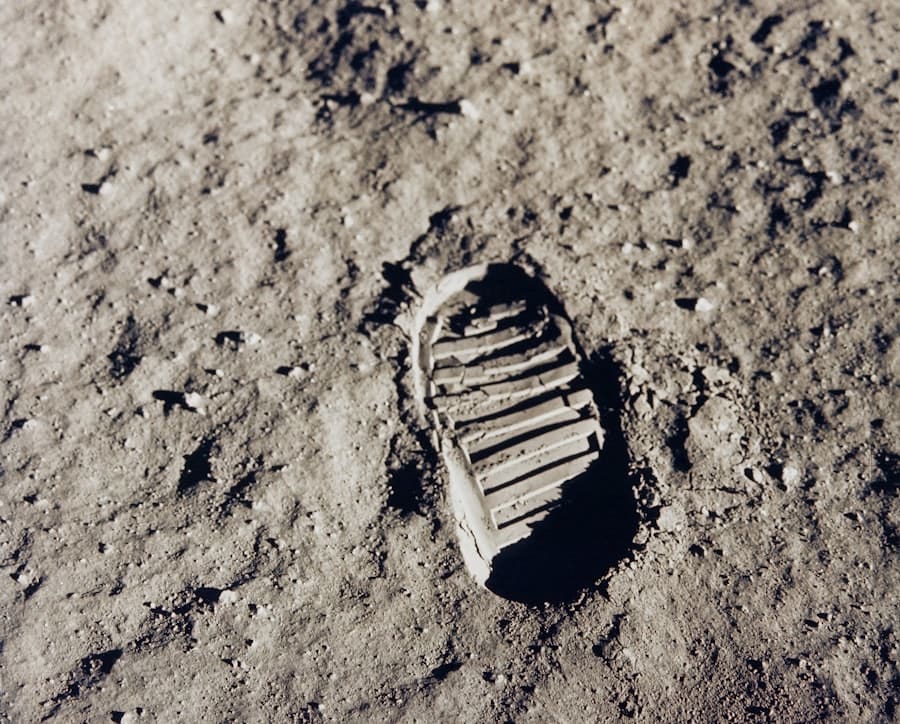Autonomous rovers have emerged as pivotal instruments in the quest to explore the Moon, serving as the eyes and hands of scientists and engineers from Earth. These robotic vehicles are designed to traverse the lunar surface, conducting experiments, gathering data, and relaying information back to mission control. Their ability to operate independently allows them to cover vast distances and access areas that would be challenging or impossible for human astronauts to reach.
This capability is particularly crucial given the Moon’s harsh environment, which includes extreme temperatures, radiation exposure, and a lack of atmosphere. By utilizing autonomous rovers, space agencies can maximize their scientific output while minimizing risks to human life. The deployment of autonomous rovers also facilitates long-term exploration strategies.
Unlike crewed missions that are limited by the duration of human presence on the Moon, rovers can be designed for extended operational lifespans. They can be equipped with advanced sensors and instruments to analyze lunar soil, study geological formations, and search for water ice in permanently shadowed craters. This continuous data collection is essential for understanding the Moon’s history and its potential for future human habitation.
As we look toward establishing a sustainable presence on the Moon, autonomous rovers will play a critical role in preparing the lunar environment for human exploration and eventual colonization.
Key Takeaways
- Autonomous rovers play a crucial role in lunar exploration by conducting scientific research, collecting samples, and mapping the lunar surface.
- Advancements in technology, such as AI, machine learning, and advanced sensors, have enabled autonomous rovers to navigate and operate more efficiently in the challenging lunar environment.
- Challenges and limitations of autonomous rovers on the moon include communication delays, extreme temperatures, and the need for robust and reliable power sources.
- Scientific discoveries made by autonomous rovers include the identification of water ice, geological formations, and the study of lunar regolith.
- Future missions and goals for autonomous rovers on the moon include the exploration of uncharted regions, conducting more in-depth scientific research, and preparing for human missions.
- Collaborations and partnerships in lunar exploration with autonomous rovers involve space agencies, private companies, and international organizations working together to share resources and expertise.
- The impact of autonomous rovers on human space exploration includes paving the way for future human missions, providing valuable data for mission planning, and testing technologies for sustainable lunar habitats.
- Ethical and environmental considerations for autonomous rovers on the moon include the preservation of lunar heritage sites, minimizing the impact on the lunar environment, and ensuring responsible use of resources.
Advancements in Technology for Autonomous Rovers
The technological advancements that have propelled autonomous rovers into the forefront of lunar exploration are nothing short of remarkable. One of the most significant developments is in navigation systems. Modern rovers are equipped with sophisticated algorithms that allow them to map their surroundings in real-time using a combination of LiDAR, cameras, and other sensors.
This capability enables them to identify obstacles, plan optimal routes, and make decisions autonomously without waiting for instructions from Earth. For instance, NASA’s Perseverance rover on Mars has demonstrated how advanced navigation can enhance a rover’s ability to traverse complex terrains, a feature that will be equally vital for lunar missions. In addition to navigation, improvements in energy management have significantly enhanced the operational capabilities of autonomous rovers.
Furthermore, advancements in battery technology enable these rovers to store energy for use during lunar nights when solar power is unavailable. The integration of artificial intelligence (AI) into rover systems has also revolutionized their functionality.
AI allows rovers to analyze data on-the-fly, making real-time decisions about which scientific experiments to prioritize based on their findings. This level of autonomy not only increases efficiency but also reduces the need for constant communication with mission control, which can be delayed due to the vast distance between Earth and the Moon.
Challenges and Limitations of Autonomous Rovers on the Moon

Despite their many advantages, autonomous rovers face a myriad of challenges and limitations when operating on the Moon. One of the primary concerns is the harsh lunar environment itself. The Moon experiences extreme temperature fluctuations, ranging from scorching heat during the day to frigid cold at night.
These conditions can affect the performance of electronic components and battery systems, potentially leading to malfunctions or reduced operational lifespans. Engineers must design rovers with robust thermal protection systems to ensure they can withstand these extremes while maintaining functionality. Another significant challenge is the communication delay between Earth and the Moon.
While this delay is relatively short—approximately 1.28 seconds one way—it can pose challenges for real-time decision-making during rover operations. Autonomous systems must be capable of handling unexpected situations without immediate input from mission control. This requires sophisticated programming and testing to ensure that rovers can respond appropriately to unforeseen obstacles or hazards.
Additionally, the lunar regolith presents its own set of challenges; its fine dust can interfere with mechanical components and sensors, potentially leading to wear and tear over time.
Scientific Discoveries Made by Autonomous Rovers
Autonomous rovers have already contributed significantly to our understanding of the Moon through various scientific discoveries. For instance, NASA’s Lunar Reconnaissance Orbiter (LRO) has provided high-resolution images of the lunar surface, revealing details about its geology and topography that were previously unknown. While LRO is not a rover in the traditional sense, its findings have informed rover missions by identifying potential landing sites and areas of interest for further exploration.
Moreover, China’s Chang’e 4 mission has showcased the capabilities of autonomous rovers in lunar exploration. The Yutu-2 rover has been exploring the far side of the Moon since its landing in January 2019. It has conducted extensive geological surveys and has made significant discoveries regarding the composition of lunar soil and rocks.
One notable finding was the detection of a unique type of rock called “apatite,” which contains water molecules trapped within its structure. This discovery has profound implications for future lunar missions, as it suggests that water resources may be more accessible than previously thought.
Future Missions and Goals for Autonomous Rovers on the Moon
Looking ahead, several ambitious missions are planned that will further leverage autonomous rovers for lunar exploration. NASA’s Artemis program aims to return humans to the Moon by 2024, with a focus on sustainable exploration by 2028. As part of this initiative, autonomous rovers will play a crucial role in scouting landing sites, conducting preliminary scientific investigations, and supporting human activities on the lunar surface.
These rovers will be tasked with identifying resources such as water ice and minerals that could be utilized for life support and fuel production. Additionally, international collaborations are expected to yield new rover missions that will expand our understanding of the Moon’s geology and potential for future habitation. The European Space Agency (ESA) is developing its own lunar rover as part of its Lunar Gateway program, which aims to establish a sustainable human presence on the Moon by 2030.
This rover will be designed to work alongside other international missions, sharing data and findings that could lead to groundbreaking discoveries about our nearest celestial neighbor.
Collaborations and Partnerships in Lunar Exploration with Autonomous Rovers

The future of lunar exploration is increasingly characterized by international collaborations and partnerships that leverage autonomous rovers’ capabilities. Space agencies around the world recognize that pooling resources and expertise can lead to more effective exploration strategies. For example, NASA has established partnerships with private companies like SpaceX and Blue Origin to develop transportation systems that can deliver rovers and other equipment to the Moon efficiently.
Moreover, collaborative missions such as the Lunar Gateway project involve multiple countries working together to create a space station in lunar orbit that will serve as a staging point for surface exploration. This initiative includes contributions from ESA, Japan’s JAXA, and Canada’s space agency, all of which are developing their own rover technologies that can operate in conjunction with one another. Such partnerships not only enhance scientific output but also foster a spirit of cooperation among nations as they work toward common goals in space exploration.
The Impact of Autonomous Rovers on Human Space Exploration
The integration of autonomous rovers into lunar exploration has profound implications for future human space exploration endeavors. By conducting preliminary surveys and gathering essential data about the lunar environment, these rovers can significantly reduce risks associated with human missions. For instance, they can identify safe landing zones free from hazardous terrain or debris before astronauts arrive on-site.
This advance knowledge allows mission planners to make informed decisions about where to send humans, ultimately enhancing safety during landings. Furthermore, autonomous rovers can assist astronauts during their missions by performing tasks that would otherwise require human intervention. For example, they can transport equipment or samples back to a base camp or assist in setting up habitats for long-term stays on the Moon.
This capability not only increases efficiency but also allows astronauts to focus on more complex scientific tasks rather than mundane logistical operations. As we prepare for longer-duration missions beyond low Earth orbit—such as those aimed at Mars—the lessons learned from deploying autonomous rovers on the Moon will be invaluable.
Ethical and Environmental Considerations for Autonomous Rovers on the Moon
As we advance our capabilities in lunar exploration through autonomous rovers, it is essential to consider the ethical and environmental implications of these activities. The Moon is not just a barren landscape; it holds cultural significance for many people around the world and is home to unique geological features that have remained untouched for billions of years. The deployment of rovers must be conducted with respect for these natural wonders and an understanding of their intrinsic value.
Moreover, there are concerns about contamination and preservation of the lunar environment. As we send more robotic explorers to the Moon, we must ensure that they do not inadvertently introduce Earth-based microbes or pollutants that could alter the pristine conditions found there. Developing protocols for planetary protection is crucial in maintaining the integrity of lunar ecosystems while allowing for scientific exploration.
Balancing our desire for discovery with our responsibility as stewards of celestial bodies will be a defining challenge as we continue our journey into space exploration through autonomous rovers on the Moon.
A related article to How Autonomous Rovers Are Advancing Lunar Exploration is the one discussing the top trends on Instagram in 2023.
To read more about the top trends on Instagram, check out this article.
FAQs
What are autonomous rovers?
Autonomous rovers are vehicles designed to navigate and explore terrain without direct human control. They are equipped with sensors, cameras, and other technology to make independent decisions and carry out tasks.
How are autonomous rovers advancing lunar exploration?
Autonomous rovers are advancing lunar exploration by being able to navigate the lunar surface, collect data, and conduct experiments without the need for constant human intervention. They can cover more ground and operate for longer periods of time than human-controlled rovers.
What technology do autonomous rovers use for navigation?
Autonomous rovers use a combination of technologies for navigation, including GPS, lidar, cameras, and inertial measurement units. These sensors allow the rovers to create maps of their surroundings and navigate obstacles.
What are the challenges of using autonomous rovers for lunar exploration?
Challenges of using autonomous rovers for lunar exploration include the need for robust communication systems, the ability to operate in extreme environments, and the development of reliable and efficient autonomous decision-making algorithms.
What are some examples of autonomous rovers used in lunar exploration?
Examples of autonomous rovers used in lunar exploration include NASA’s Lunar Roving Vehicle used during the Apollo missions, and more recently, the Chinese Yutu rovers deployed on the moon’s surface.

